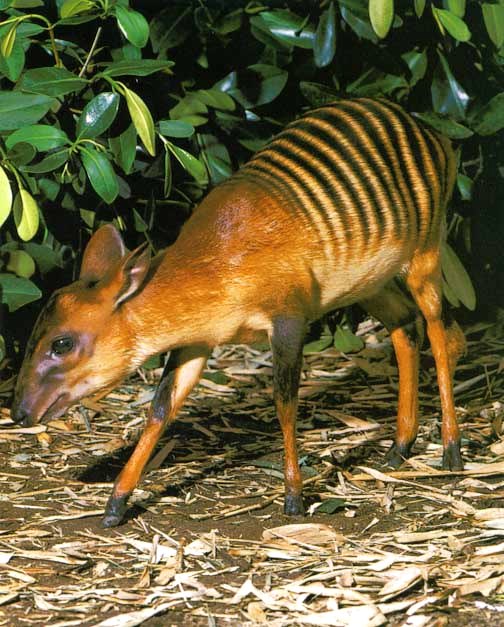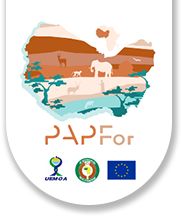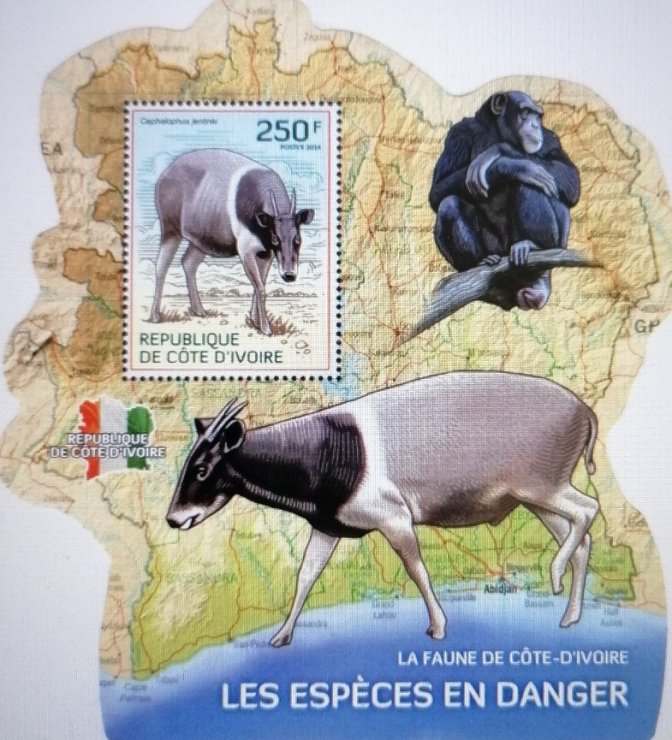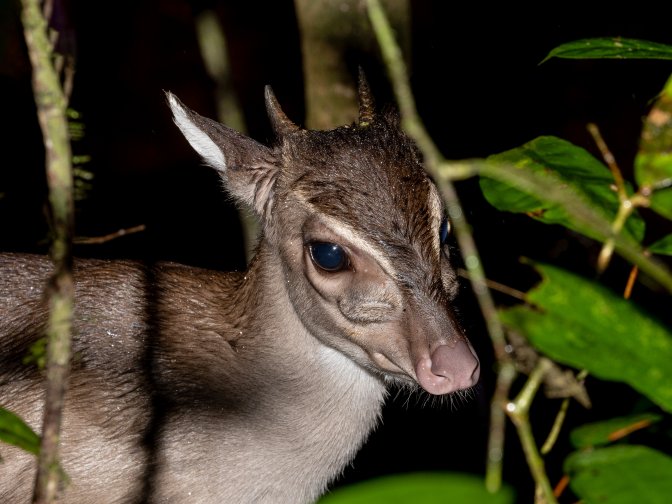Home / Guinean forests / Characteristics / The biodiversity / Species identity card / Duikers
Duikers
We are fairly familiar with the large mammals that inhabit our forests. But among the typical mammals of the Guinean forests, have you heard of duikers?
Duikers are small forest antelopes in the bovid family. The Guinean forests are home to no fewer than 9 species of duiker, 4 of which are endemic, meaning that they are found in no other forest in the world.
| Duikers of the Guinean forests | |
|---|---|
| Scientific name | Common name |
| Philantomba monticola | Blue duiker |
| Philantomba maxwelli | Maxwell’s duiker |
| Philatomba walteri | Walter’s duiker |
| Cephalophus zebra | Zebra duiker |
| Cephalophus brookei | Brook’s duiker |
| Cephalophus niger | Black duiker |
| Cephalophus silvicultor | Yellow-backed duiker |
| Cephalophus dorsalis | Bay duiker |
| Cephalophus jentinki | Jentink’s duiker |
| Species shown in bold are endemic to the Upper Guinean forests | |
Blue and Maxwell’s duikers are the smallest species, with an adult female hardly reaching more than 5 or 6 kg. At the other extreme are the Yellow-backed and Jentink’s duikers, whose males can reach 80 kg.
Some duikers are emblematic because of their unique appearance. Of particular note are the Zebra duiker (Cephalophus zebra) and the Jentink’s duiker (Cephalophus jentinki), both of which have virtually the same distribution: from eastern Sierra Leone to western Côte d’Ivoire.
Duikers are an essential link in the ecological chain of the Guinean forests: they are prey for large predators such as leopard, they control the composition of the undergrowth by eating vegetation, including young plant shoots, and they are important disseminators of trees as they eat ripe fruit that has fallen to the ground.
All duikers are hunted for their meat, and many species have virtually disappeared outside protected areas. It is estimated, for example, that there are fewer than 2 500 individuals of Brook’s duiker left, which is considered to be in danger of extinction. The Sapo, Grebo-Krahn and Taï National Parks are important refuges for this species. Similarly, zebra and Jentink’s duikers are threatened and their survival depends largely on conservation programmes such as PAPFor, which is active in the Gola-Foya, Wologizi-Wonegizi-Ziama and Taï - Grebo-Krahn - Sapo landscapes, corresponding almost perfectly to their distribution.
Jentink’s duiker
- Class : Mammal
- Order : Cetartiodactyla
- Family : Bovidae
- Genus : Cephalophus
- Species : jentinki
- Weight : between 55 and 80 kg, making it one of the largest duikers in Africa.
- Dimensions : height at withers: 75-85cm
- Diet: mainly young shoots from shrubs in the undergrowth, but especially fruit that has fallen to the ground. Has very strong jaws, enabling it to eat nuts.
Habitat : mainly dense forests with closed canopies, but also natural clearings and adjacent heavily wooded agricultural areas. Requires numerous fruit-bearing trees and dense undergrowth for shelter. - Lifespan: unknown; 21 years in captivity.
- Reproduction : very little is known; generally one young per litter.
- Social life : no known social organisation; most observations are of isolated individuals, sometimes in pairs. Sedentary and territorial.




